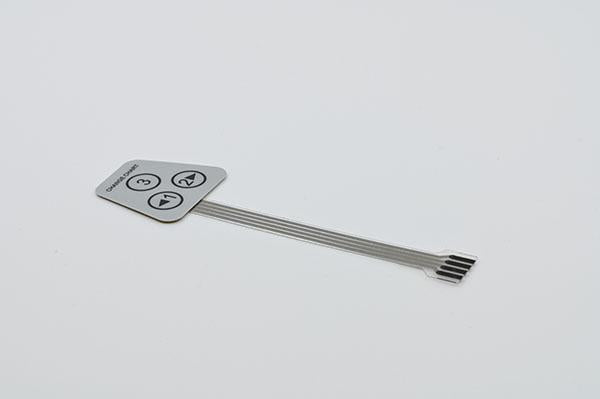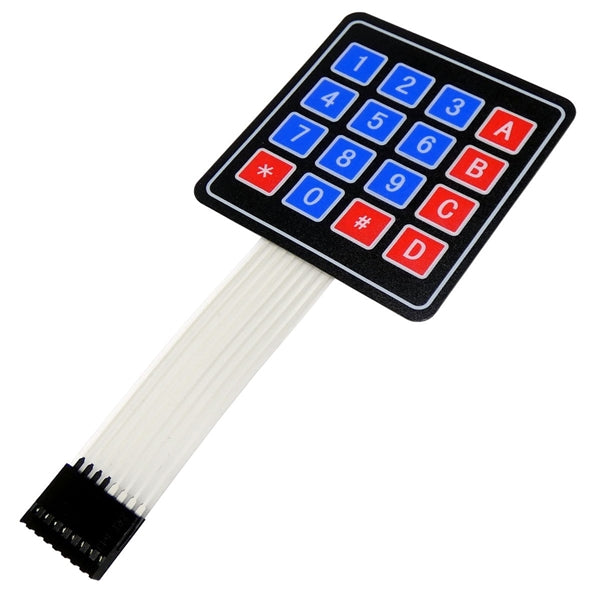Why Membrane Switches Are Essential for Durable Control Equipment
Membrane layer buttons play a crucial duty in ensuring the durability and integrity of control systems across numerous industries. As we check out the diverse advantages of membrane buttons, it becomes obvious that their value transcends simple functionality, affecting user experience and functional performance.
Overview of Membrane Buttons
Membrane layer switches are versatile and dependable elements typically made use of in various electronic control systems. The graphic overlay gives both practical and visual style, while the spacer layer ensures that the buttons are turned on just when pushed.
Membrane layer switches are commonly preferred in applications needing a compact and lightweight style, making them ideal for handheld tools, clinical tools, and commercial equipment. They can be customized to meet certain customer needs and can incorporate numerous functions such as backlighting, tactile feedback, and numerous shades. Additionally, membrane switches are immune to dirt, dampness, and pollutants, making them appropriate for environments where longevity is vital.
Benefits of Sturdiness
In many applications, the longevity of membrane layer switches over offers significant advantages that boost their overall efficiency and dependability. These buttons are created to hold up against extreme settings, making them ideal for use popular problems such as high humidity, severe temperatures, and exposure to chemicals. Their robust building assists to avoid damage from physical impact, making certain long-lasting performance and decreasing the requirement for regular substitutes.
Furthermore, membrane layer switches are immune to deterioration, which is essential in applications where constant interaction occurs. This longevity equates to lower maintenance prices, as companies gain from reduced downtime and less service disturbances. Furthermore, the encapsulated style of membrane switches safeguards interior components from dirt and wetness ingress, further contributing to their lifespan.
One more advantage is their ability to preserve regular performance in time. With a high resistance for mechanical anxiety, these switches preserve their responsive responses and electrical stability, ensuring customer satisfaction. Eventually, the durability of membrane layer switches over not only enhances functional efficiency yet additionally fosters confidence in their integrity, making them a recommended option for control systems across various fields.
Applications in Different Industries
Resilient control systems utilizing membrane switches discover extensive applications across a series of industries, each gaining from the one-of-a-kind characteristics these switches supply. In the clinical sector, membrane buttons are vital for devices such as person screens and analysis tools, where reliability and ease of cleansing are paramount. Their resistance to moisture and contaminants ensures they preserve performance in sterile environments.
The auto industry leverages membrane layer buttons for dashboard controls and infomercial systems, where they supply sleek, low-profile interfaces that improve individual experience. These buttons are additionally made to stand up to severe conditions, consisting of direct exposure to extreme temperature levels and resonances.
In commercial settings, membrane layer buttons are typically made use of in equipment control board, using responsive comments and durability essential for high-usage applications. Their capacity to withstand chemicals makes them appropriate for manufacturing environments where spills and impurities are regular.

Customer electronic devices, such as kitchen appliances and remote controls, additionally use membrane layer switches for their convenience and why not try here cost-effectiveness. Generally, the versatility and durable nature of membrane layer switches over make them vital throughout different fields, guaranteeing reliable operation and durability in control systems.
Style and Aesthetic Allure
While functionality is extremely important, the style and aesthetic allure of control systems geared up with membrane layer switches play a vital duty in user involvement and general experience (membrane switch). The aesthetic layout of these switches can significantly affect individual perception and communication. A well-designed membrane switch enhances the appearance of the gadget, making it more enticing to customers and fostering a link between the customer and the product
Membrane changes use a large amount of adaptability in style, permitting suppliers to tailor graphics, shades, and structures to line up with brand name identity and item visual appeals. The use of vibrant shades and distinct patterns can draw focus, while tactile responses can enhance the customer's interaction with the tool. In addition, the ability to integrate LED indications and backlighting into the membrane layer switch design supplies both useful and visual advantages, boosting visibility and functionality in numerous atmospheres.

Enhancing Customer Experience

Moreover, membrane layer buttons can be customized to integrate graphical interfaces, boosting functionality by presenting info in a clear and intuitive fashion (membrane switch). This modification can consist of icons, labels, and color coding that overview individuals through complicated capabilities with simplicity. Additionally, their versatility enables assimilation in numerous atmospheres, ensuring regular performance whether in commercial machinery or customer electronics
The toughness of membrane buttons also plays a critical role in user experience. By enduring important site rough problems and prolonged usage, these switches minimize the possibility of system failings, therefore promoting reliability and user self-confidence. Eventually, the calculated use of membrane layer switches not only raises functionality yet additionally considerably enhances user communication with control systems, making them an indispensable element in contemporary design.
Verdict

Comments on “The Role of Membrane Switches in Improving Product Durability and Performance”